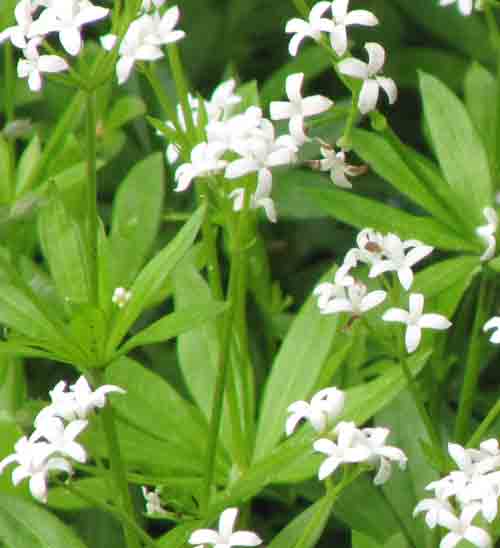Latin name: Galium odoratum, syn. Asperula odorata
Plant type: Perennial
USDA Hardiness Zones: 4-9 (sheltered or near the house in Zone 3)
Cultural needs: Shade or partial shade, moist (even wet) soil
Plant size: 6-12″ high, spreading quickly to 9-12″ wide

Do you have a rather large shady spot in need of an easy perennial groundcover? Hailing from Europe, sweet woodruff may be a good candidate. Some gardeners find it invasive but, knowing that, give it some space to spread and choke out pesky weeds. Masses of fluffy green leaves rise too far above the ground to use next to buildings or track unless the track is raised about a foot, as in the photo. Otherwise, plant sweet woodruff alongside trestles; under full-scale trees, where it can replace costly mulch; or in the background to suggest a deciduous forest of palm-like trees. Plant this vigorous perennial on hillsides to control erosion. By interplanting spring bulbs among sweet woodruff, the yellowing bulb leaves will be hidden, once they have bloomed.

In colder climates, galiums die to the ground but, in milder climates, the leaves stay green all winter, flattening out in spring when new growth emerges. By late spring, starry white flowers cover the plants like a dusting of snow. The “sweet” in its name comes from the scented, dried foliage, a traditional stuffing for pillows and mattresses, along with its cousin, lady’s bedstraw (Galium verum). Deer and rabbits dislike the honey odor. Purchase plants at most nurseries.













